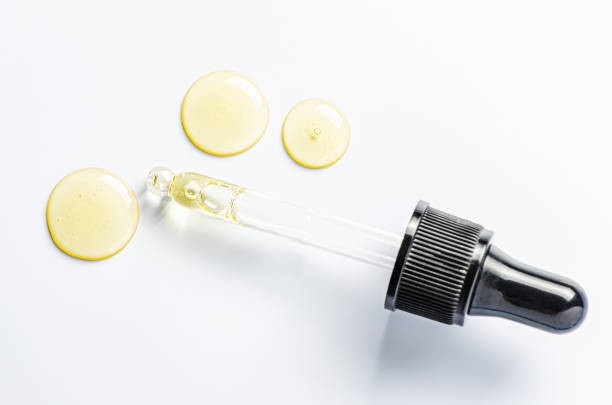Glycolic acid is a potent form of Alpha Hydroxy Acid (AHA), which is a group of naturally occurring (in fruits), water-soluble acids used in skincare for their exfoliating properties. Glycolic acid is widespread in nature and used in numerous skincare products. It is considered a powerhouse ingredient recognized for its ability to transform the skin. Glycolic acid has effectively proven to exfoliate skin, help in treating acne, reduce fine lines and improve skin’s texture.
HISTORY
The term “Glycolic Acid” was coined in 1848 by French chemist Auguste Laurent. He proposed that the amino acid glycine might be the amine of a hypothetical acid, which he called Glycolic acid (acide glycolique). In 1851, this hypothetical acid was prepared in the lab by German chemist Adolph Strecker and Russian chemist Nikolai Nikolaevich Sokolov. They produced it by treating hippuric acid with nitric acid and nitrogen dioxide to form an ester of benzoic acid and glycolic acid, which they termed as “benzoglycolic acid”. They boiled the ester with dilute sulphuric acid for a few days, which created benzoic acid and glycolic acid. Throughout the years, glycolic acid was used as a dyeing and tanning agent in the textile industry.
HOW IT WORKS AND BENEFITS
Glycolic acid naturally derives from sugarcane and it is also found in other sources like beet, unripe grapes and pineapples. But the highest concentration of glycolic acid is sourced and yielded from sugarcanes. Glycolic acid has a small molecular size especially compared to other AHAs like citric acid, lactic acid, tartaric acid and malic acid. Because of glycolic acid’s small molecular size, it can easily penetrate the skin and dissolve the “glue” that binds dead skin cells to the surface. This exfoliates the skin removing the top layer of dead skin cells revealing a brighter and smoother skin.
Glycolic acid is known to accelerate cell turnover process, which promotes shedding of old skin cells and growth of new ones. According to a study in “National Library of Medicine”, a certain concentration of glycolic acid exhibits anti-bacterial properties especially against Cutibacterium acnes, a bacterium implicated in acne. Glycolic acid’s antibacterial activity stems from its ability to disrupt bacterial cell membranes. Because of its antibacterial properties, glycolic acid is used in chemical peels and skincare products to reduce inflammation caused by acne.
According to a study in, “ National Centre for Biotechnology Information”, regular use of the right concentration of glycolic acid can stimulate collagen production because of its exfoliating properties. Regular usage has proven to reduce signs of ageing; appearance of wrinkles and fine lines and improves skin’s firmness and elasticity, making skin more youthful and bright.
HOW TO USE SAFELY
Glycolic acid is generally considered safe for most skin types, it is very important to use it with care and after proper research. Incorrect usage or overusing glycolic acid can cause redness, sensitivity and skin irritation. It is recommended to start glycolic acid with a lower concentration of about 5%. Always patch test the product to see if your skin is sensitive to it or can handle the product. Once you have started regularly and safely using it, you can increase the concentration to 10%. Experts and professionals do not recommend more than 10% because higher concentration becomes highly unsafe to use. Concentration of more than 10% should only be used after consulting a doctor.
Glycolic acid comes in many skincare variants like cleansers, creams, serums and toners. Leave on products of Glycolic acid are said to work most effectively on skin. It should only be applied in the PM and on clean and dry skin. Leave it on for about 20 to 30 minutes so that it can properly absorb into the skin and top it up with a good hydrating moisturizer. It is recommended to use only 2 to 3 times a week. If you are using glycolic acid, make sure to wear sunscreen in the morning always because glycolic acid can increase skin’s sensitivity to the sun. Sunscreen will protect the skin from UV damage and maintain the benefits of glycolic acid.
Glycolic acid can be used to treat acne on your face and body, dark underarms, hyperpigmentation, scars, keratosis pilaris and ageing skin. Glycolic acid can also be used on scalp to treat dandruff by applying a proper concentration of it on the scalp, leaving it on for 10 minutes and washing it off with shampoo. It is truly a powerhouse ingredient that does it all and can provide you with happy glowing skin and shiny hair.


Leave a Comment